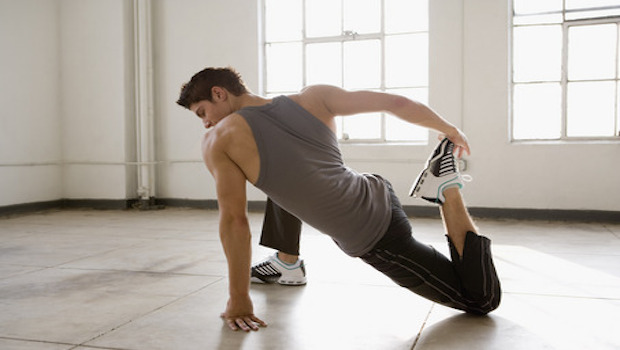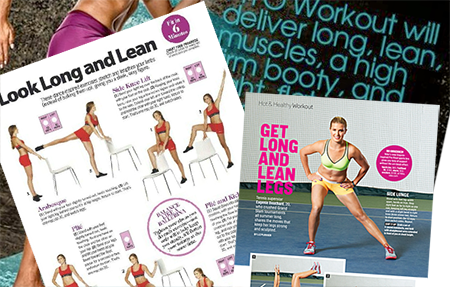Strength Stretching
Feb 12, 2018
Stretching is one of those things you either love or hate to do. Personally, I hate it, I find it boring, awkward, and generally a waste of time, also I find it never makes any difference in my flexibility.
Yet all the gurus, yogis, supple leopards, and flexible floppies out there tell us that stretching is essential for your health, well being and for the prevention of injury. However, this is just not the case at all.
First, how flexible someone is or is not, is not a useful or reliable measure of their health, wellness, or athleticism (ref). Flexibility is a trait dictated by many factors such as our activity levels, but more so our genetics (ref). Also stretching has been shown not to be the most effective way to reduce injuries, especially in runners who seem to want to do it the most (ref, ref).
Yet despite this many think stretching is the key to life, love, and success and so twist and contort themselves into some eye-popping positions, and suggest others do the same. But there are many misconceptions around stretching and I want to discuss a few of these as well as propose a different way to look at stretching... something I call 'strength stretching'!
What is Stretching?
Stretching is done in many different ways such as the most common static holds, or more active, dynamic, and ballistic ways. There are also some other fancier methods such as contract and relax, proprioceptive neuromuscular facilitation or PNF for short, as well as other methods with acronyms such as PAILs, RAILs, and CARS
However, regardless of what type of stretching you do, they are all designed to help improve your flexibility and prepare you and warm the bodies soft tissues and joints up for sporting activities and reduce the risk of pulling or tweaking something.

However, as already mentioned research has shown that stretching doesn't really significantly improve your performance or reduce your risk of injury for most sports, with the exception of a few sports where joint end of ranges are routinely reached such as in gymnastics or martial arts (ref, ref, ref). But most other sports such as running or gym-based activities stretching just doesn't reduce injury or make you perform better, yet this is where most people use it.
Waste of Time?
Now I don't think there are any harmful or detrimental effects from stretching before a run or a gym session apart from wasting some time. So if you want to stretch go ahead, just don't be fooled into thinking it is sufficient to prepare you for your sports or activities.
The negative effects of stretching that are sometimes mentioned such as reduced power and speed as shown in some research realistically will not be noticed by most of us and is only of importance to elite athletes at the top of their game.
Also, those who do stretch routinely before a sport or activity, there may be positive psychological benefits of going through a familiar routine and the rituals and expectations this can produce.
So the only time I would recommend someone stops stretching is if they are doing it at the expense of something else that I feel would be more beneficial, or if it was becoming an adverse maladaptive or compulsive behaviour, a bit like those who continuously scratch to try and stop an itch.
I also usually recommend people stop stretching with certain tendinopathies in the early painful stages such as cross-leg stretches in those with glute med tendinopathy, and calf heel drops for those with insertional Achilles tendons.
The reasoning behind this is to reduce the compression forces on the tendon whilst it's painful and pathological (ref). However, after listening to Dr Pete Malliaras recently I may rethink this advice, as Pete thinks the forces and the time spent by most when they stretch is too small to cause any detrimental or negative effects.
Sisters of Science
There are also a lot of other misunderstandings around the effects of stretching, such as thinking it changes the length and shape of muscles, with many advocates telling females stretching will give them long, lean, sexy looking muscles.
This 'sister-science' which is a close relation to the more common 'bro-science' is often perpetuated in activities like yoga and pilates classes misleading millions of women to waste hours and hours stretching in the vain hope it will make them lean and slender when actually stretching makes very little difference to the aesthetic appearance of their bodies.

Although stretching isn't a passive activity and forms part of the continuum of exercise and indeed loading, the forces produced during stretching are often just too low to create any significant adaptive changes. Many studies do show improvements in range of movement after stretching interventions (ref), but very rarely do they show any change to the structure of the tissues, unless you do it really really hard, for really really long times (ref). Simply put most stretching routines will have little to no effect on the physiological structure of our bodies.
Use the Force
It appears that most stretching improves our flexibility not by lengthening our muscles but by increasing our tolerance to the stretch sensation by habituating us to the protective stretch reflex (ref). So if you want to alter a muscles shape or length stretching won't do it, instead, we need to increase the force the muscles are exposed to.
The easiest way to increase forces into a muscle or any other soft tissue is with an external load, such as with strength or resistance training, however many do not associate strength training with increases in flexibility. In fact many think resistance training does the opposite, creating big bulky stiff muscles.
But if an external load is applied steadily, slowly, and consistently through a joint and muscles available range of motion, then its flexibility can be improved, this is what I call Strength Stretching.
Strength stretching improves flexibility in a number of ways, one being habituation to the stretch reflex just like stretching does, but also via a process called sarcomerogenesis (ref), which is a fancy way of saying lengthening muscles.
Heavy slow forces into skeletal muscle, especially eccentric forces, seem to signal sarcomerogenesis via a complex process that I don't fully understand (ref). All I know and care about is if I apply heavy slow eccentric forces to a muscle it adapts via this process, strengthening and lengthening the muscle... that what I call a win-win!
Also, a very recent systematic review of 11 trials that compared the improvements in flexibility between stretching and strengthening exercises has shown that strengthening is just as effective as stretching for improving flexibility (ref).
Heavy and Slow
So for most people I see these days who tell me they feel stiff or tight, I now rarely recommend stretching, instead preferring to give them some 'strength stretching'. This sounds simple, but in reality, it can be hard to convince many.
The beliefs that when you are stiff stretching is needed and strengthening will only worsen it are rife and pervasive. But, when I can convince them to try most never go back to stretching again.
I often ask them to use a heavy load that scares them a little to use, but that they feel in control of, asking them to take it slowly through the range or position that they feel tight or restricted in. How long and how many reps I ask them to do is dependant on their pain and fatigue levels, but usually, it around 10 seconds per rep and anywhere from 5-8 reps, with 2-3 sets done per session, and usually done every other day.
They are warned that they will have some perfectly normal post 'strength stretching' soreness which is due to the heavy slow eccentric forces causing microscopic muscle damage with then signals the normal muscle repair and adaptive sarcomereogenesis processes.
Summary
So for me, I find 'strength stretching' a far more effective and efficient way to maintain or restore range of movement or reduce sensations of stiffness than static stretching. And although I'm no advocate of stretching I am an advocate of movement, so rarely will you hear me recommend that someone stops stretching, especially if they enjoy doing it. However, my argument is if you're going to stretch, why not get stronger whilst you're doing it.
As always thanks for reading
Adam
Stay connected with new blogs and updates!
Join my mailing list to receive the latest blogs and updates.
Don't worry, your information will not be shared.
I hate SPAM, so I promise I will never sell your information to any third party trying to sell you laser guided acupuncture needles or some other BS.

